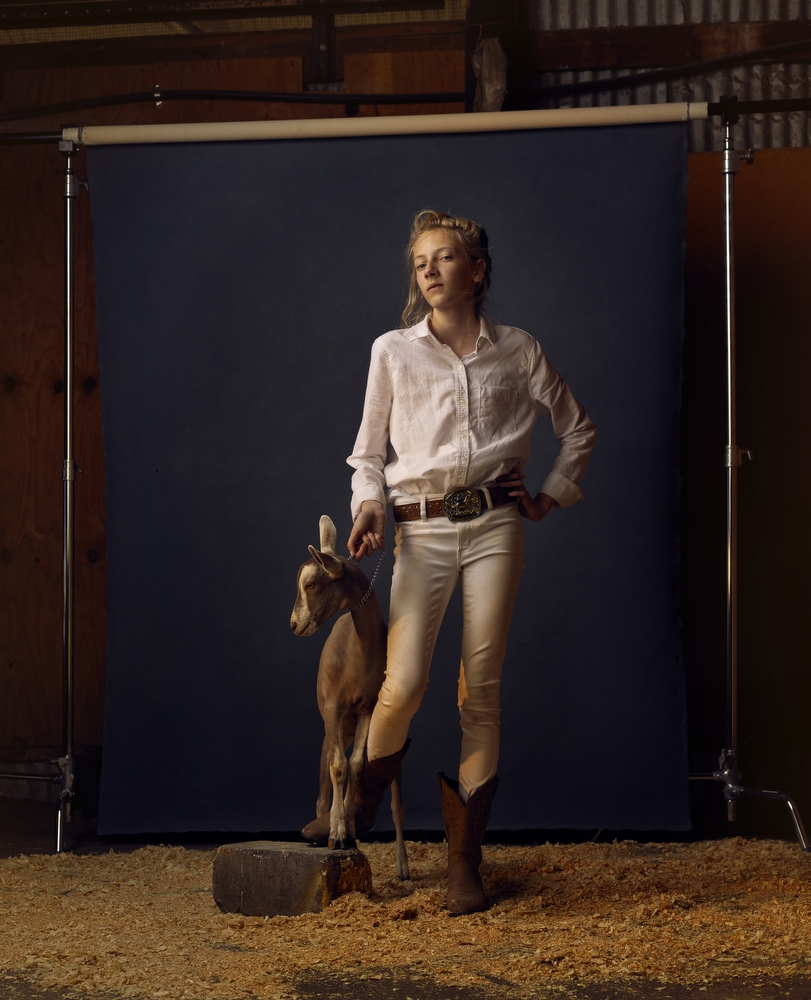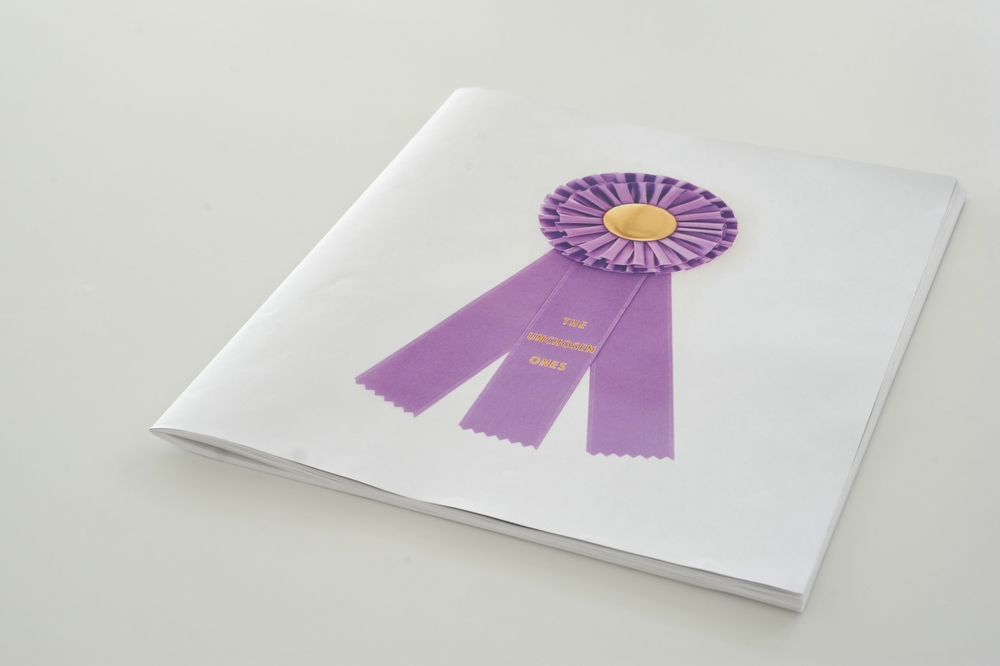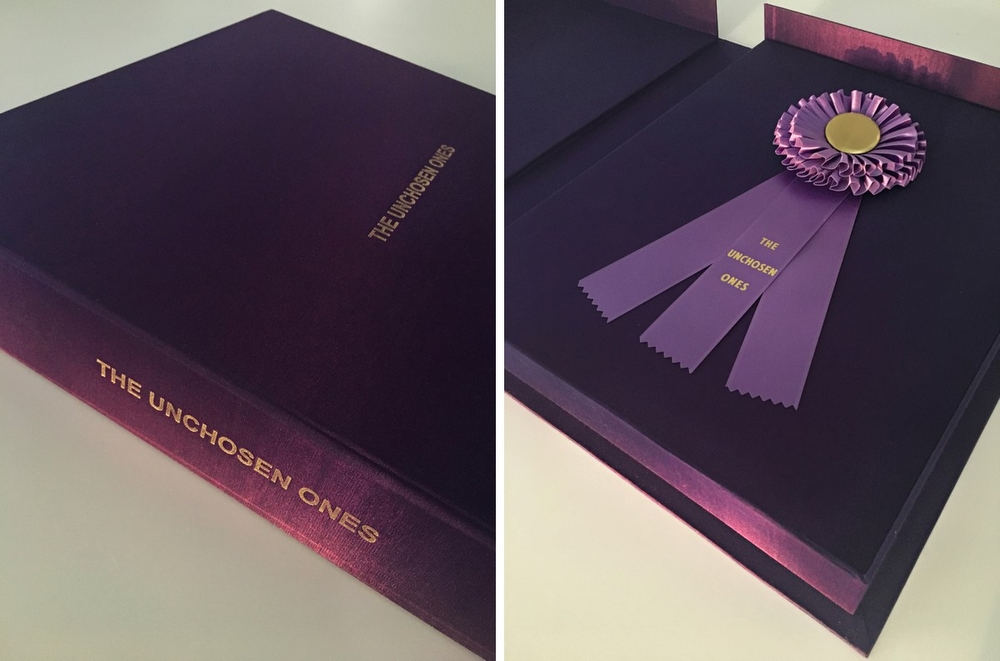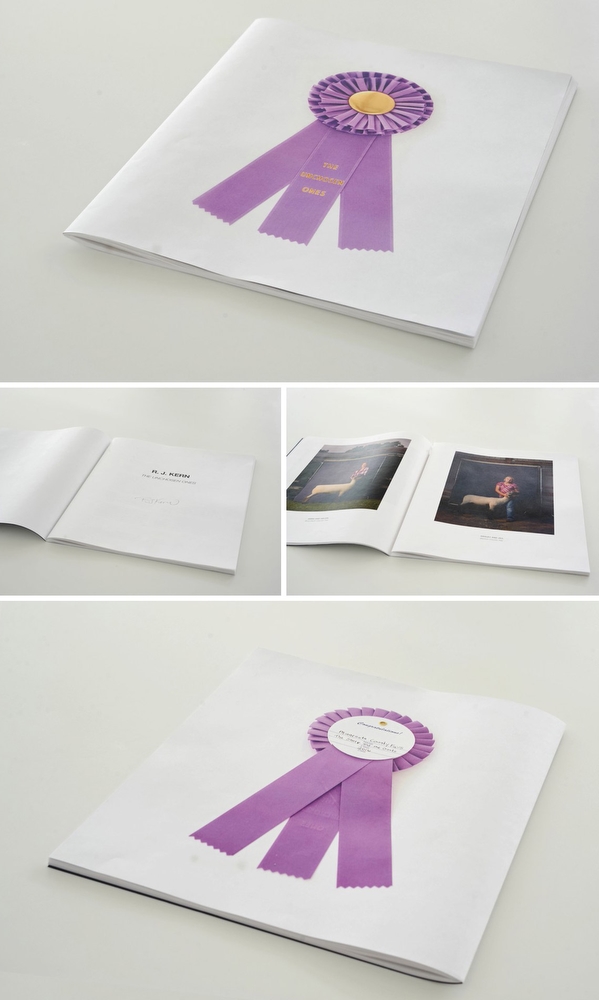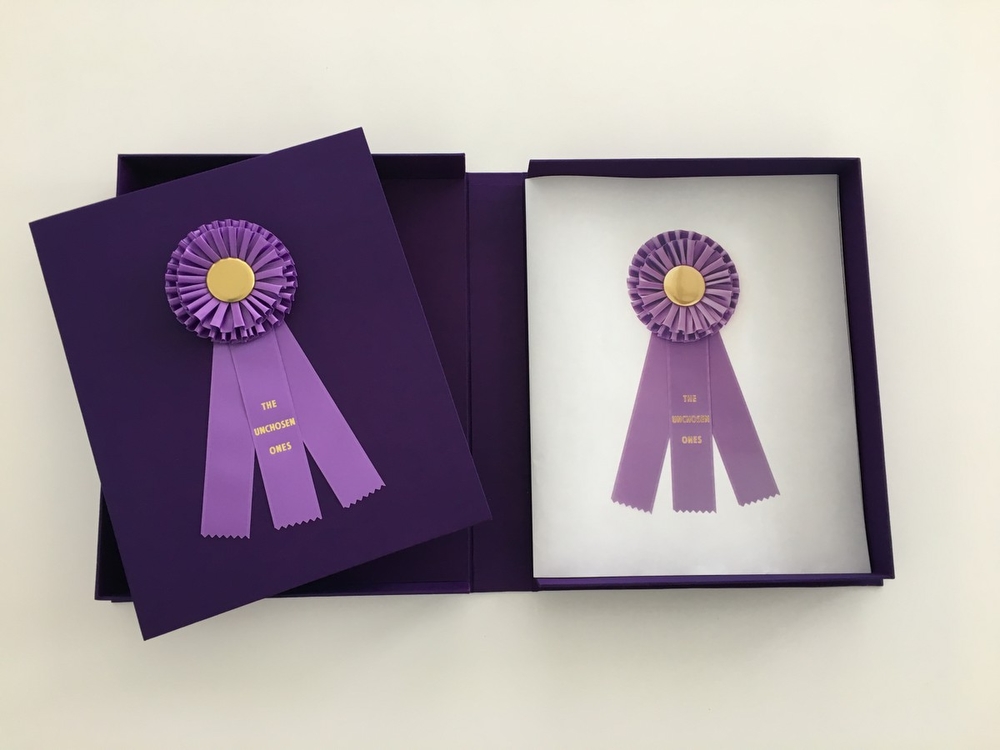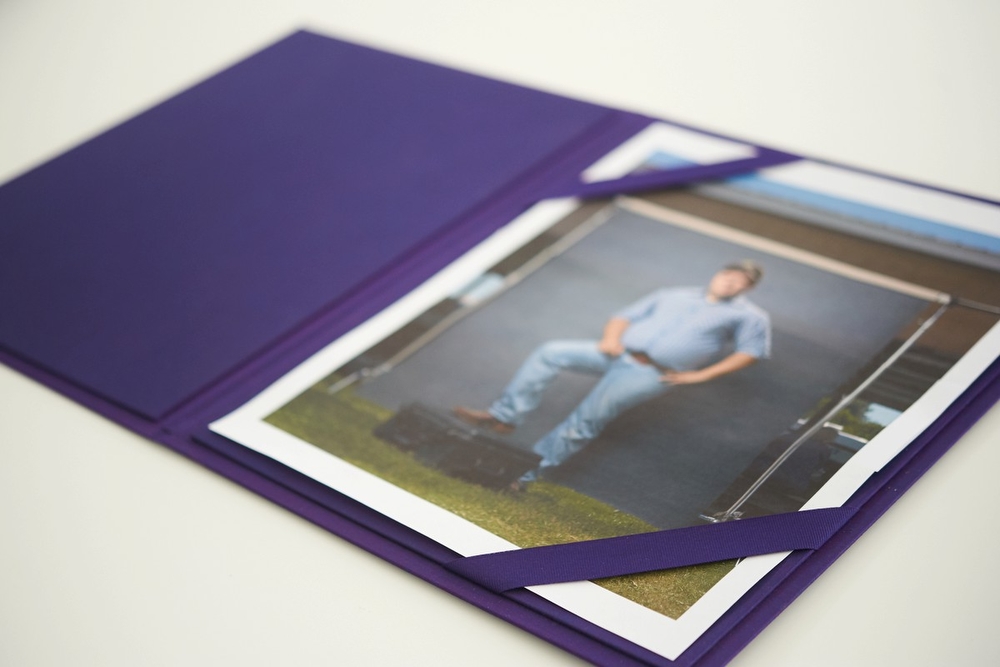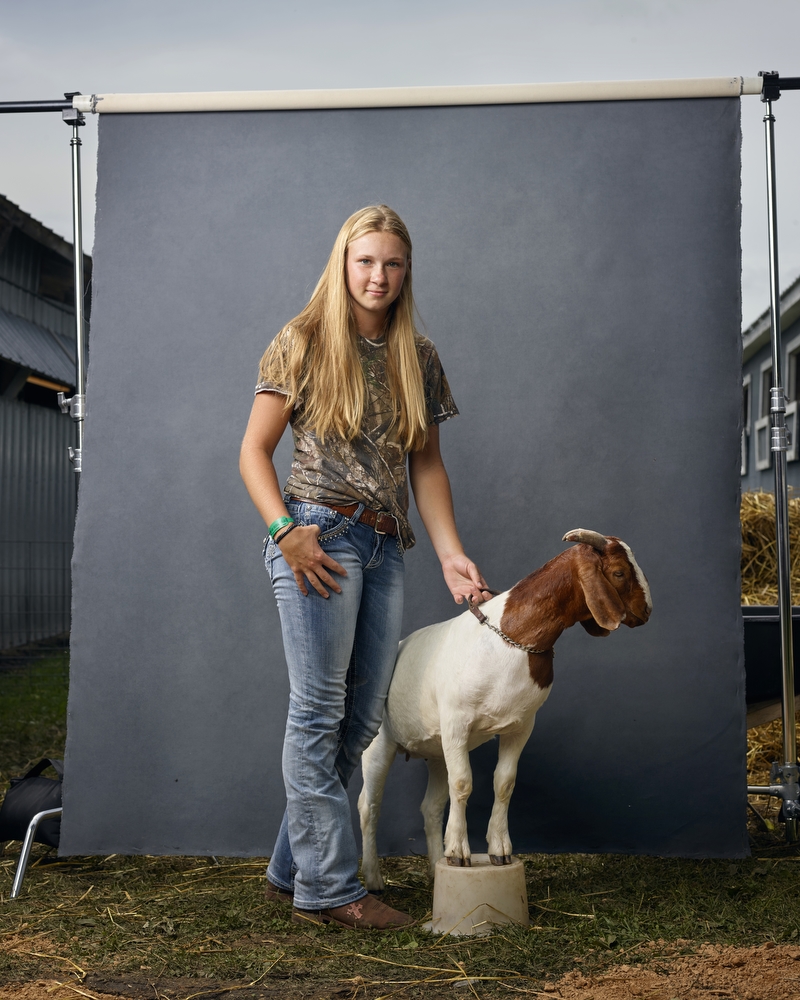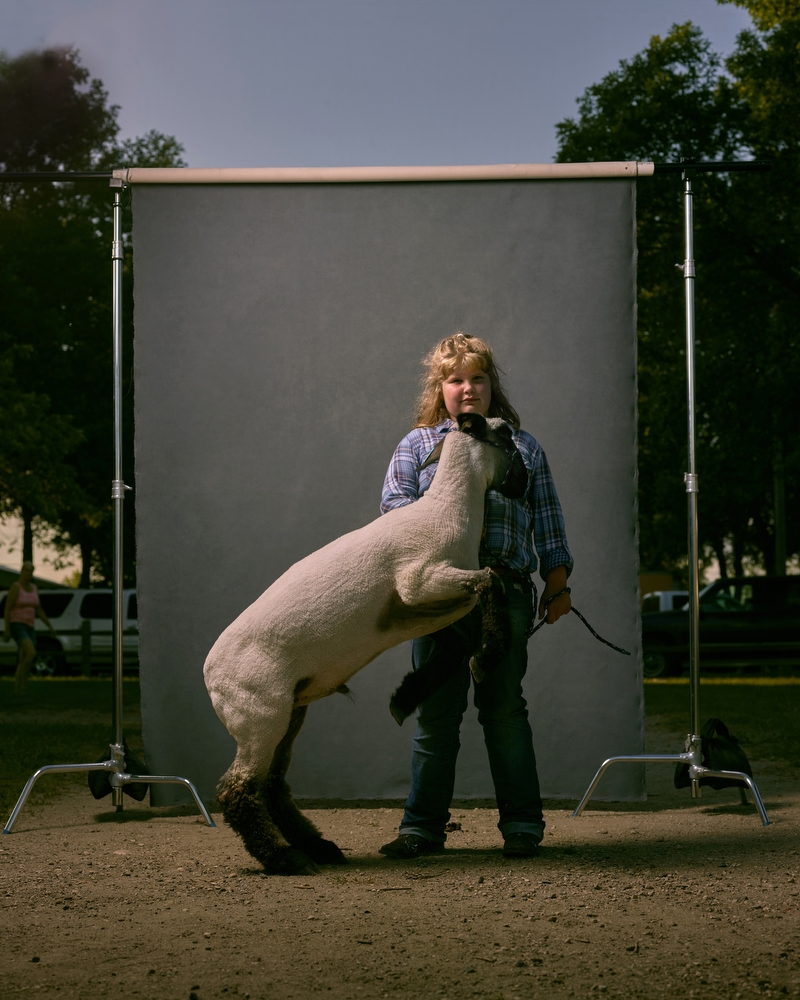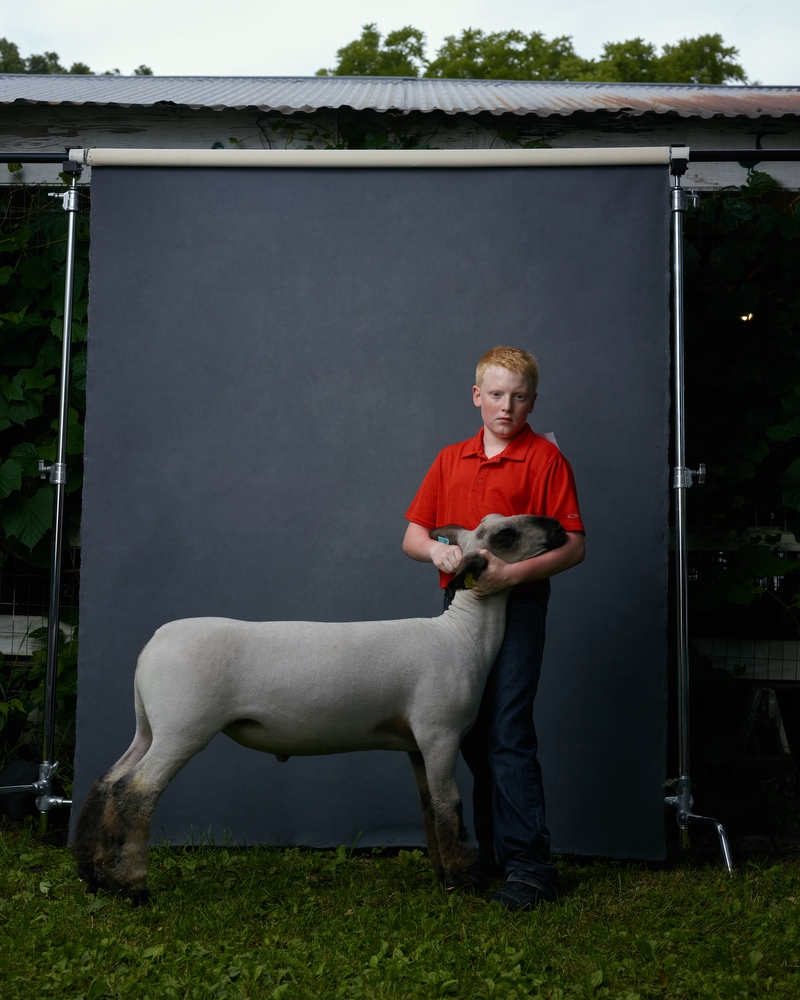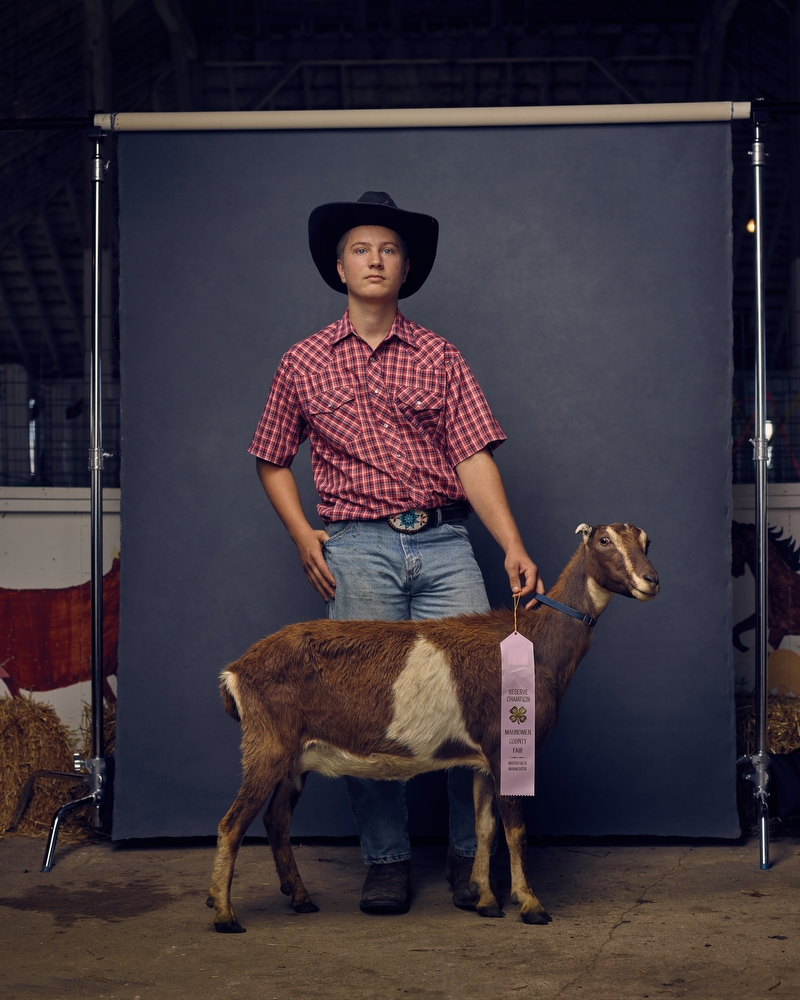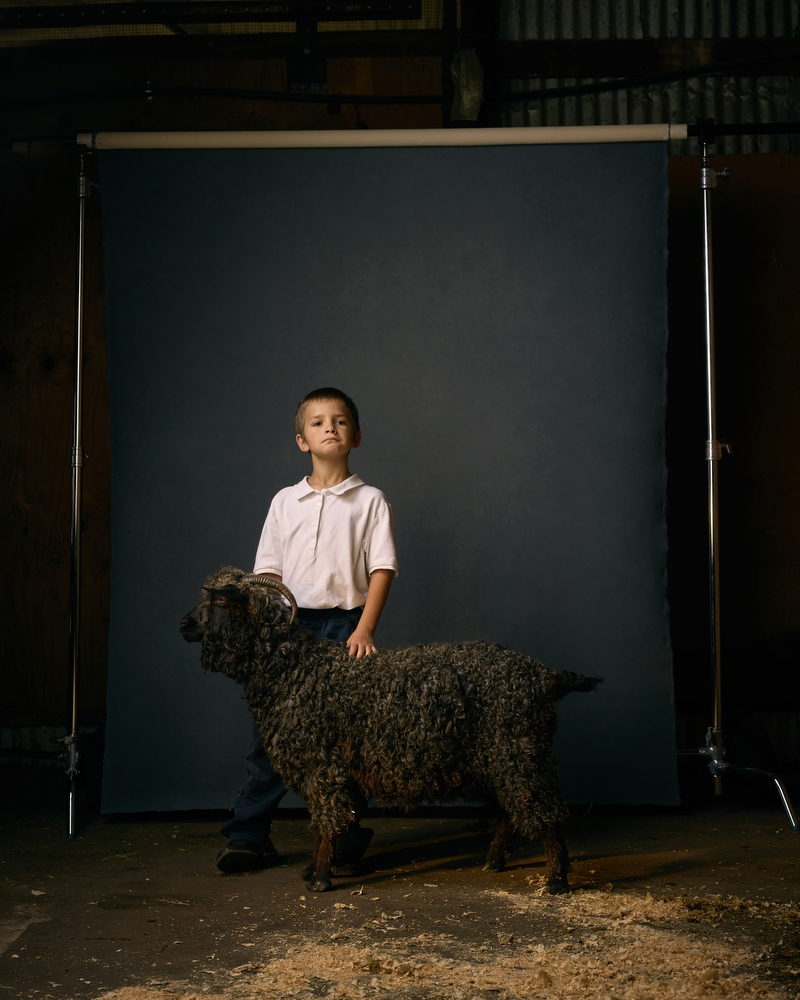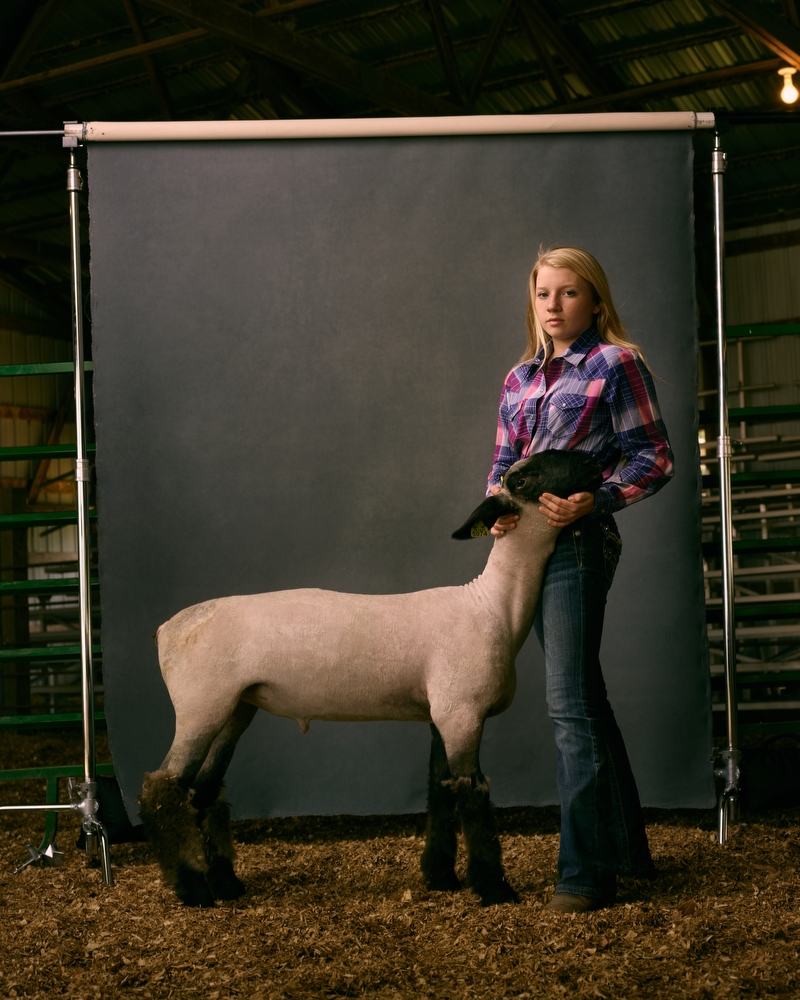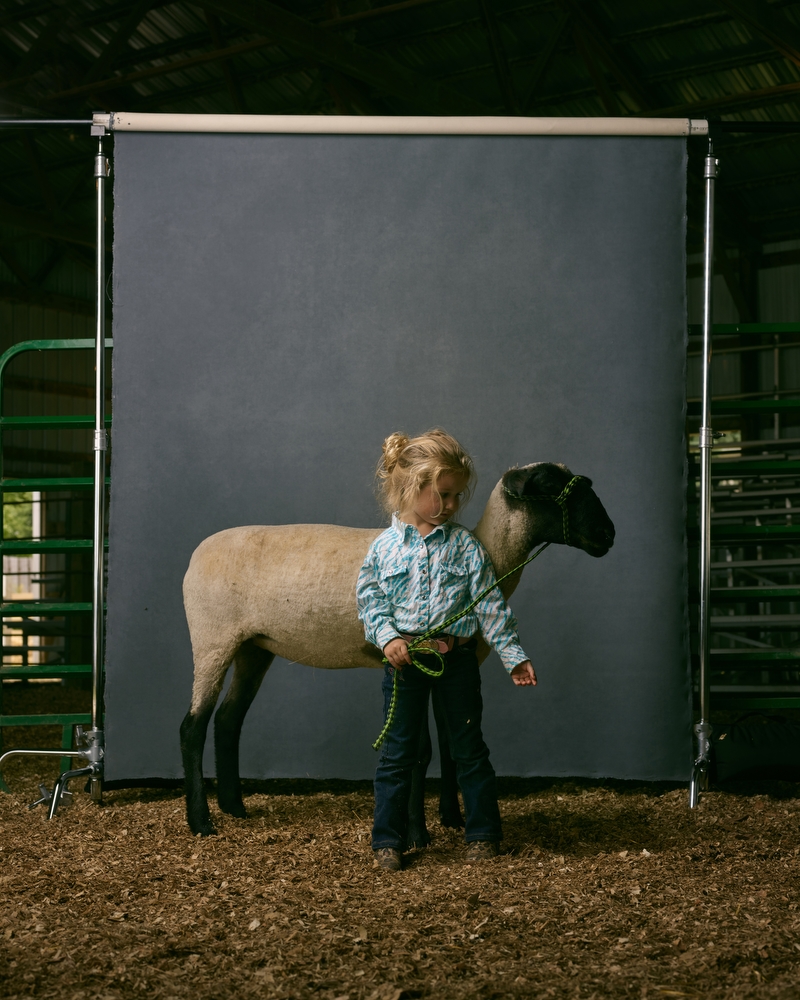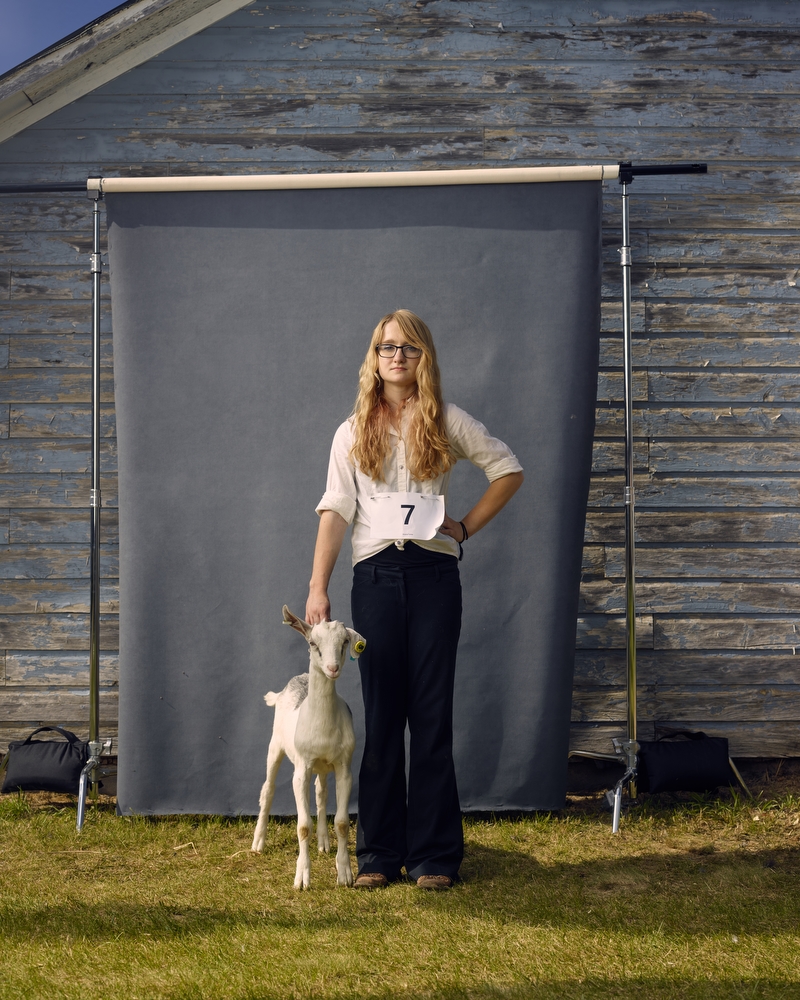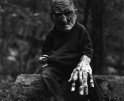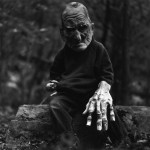R. J. Kern: The Unchosen Ones
Last year, when I attended the Photolucida Portfolio Reviews, there was a building buzz about a particular body of work, so I was happy when R. J. Kern sat down at my table and showed me his wonderful project, The Unchosen Ones. The series was beautifully considered and presented and pulled at the heart strings. The Unchosen Ones follows his earlier series focusing on animals, The Sheep and The Goats, and focuses on the sidelines of Minnesota county fair animal contests. These county fairs lead up to the Minnesota State Fair, one of the largest and best-attended expositions in the world. Instead of photographing the winners, he photographed the animals and their handlers who came in last, capturing his subjects with dignity and respect.
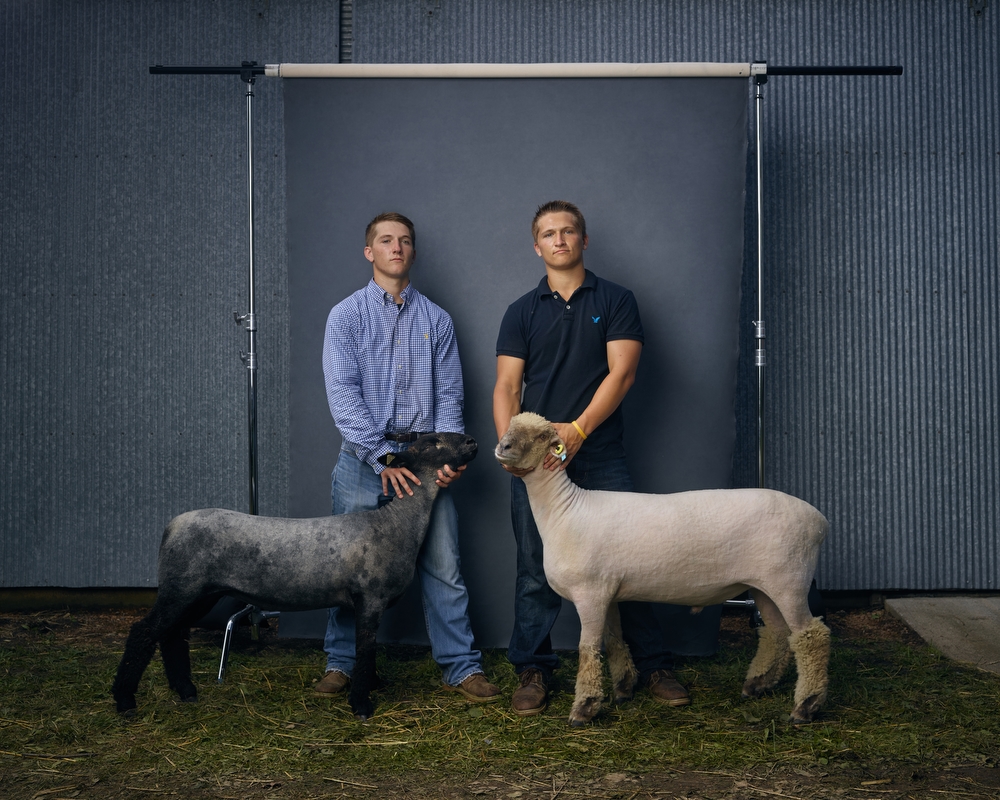
Anders with 1090 Blackface and Brandon with 261 Speck, Carver County Fair. From the series The Unchosen Ones. © R. J. Kern
There are two offerings:
The Artist Book Edition includes essays by independent curator Alison Nordström, PhD and Joe Scapanski, Minnesota State Fair Board of Managers. Designed by Matthew Steaffens. Publisher: Author. 2018. Softcover, unbound. 12.5 x 15.5 inches (31.6 x 39.4 cm). 76 pages, 65 color illustrations. Printed in Minneapolis, Minnesota, USA. First Edition, 200 copies. Retail price: US $35.
The COLLECTOR’S EDITION features:
$800 per set for the first 5 copies. Pricing to increase as edition sells out. Available May 2018.
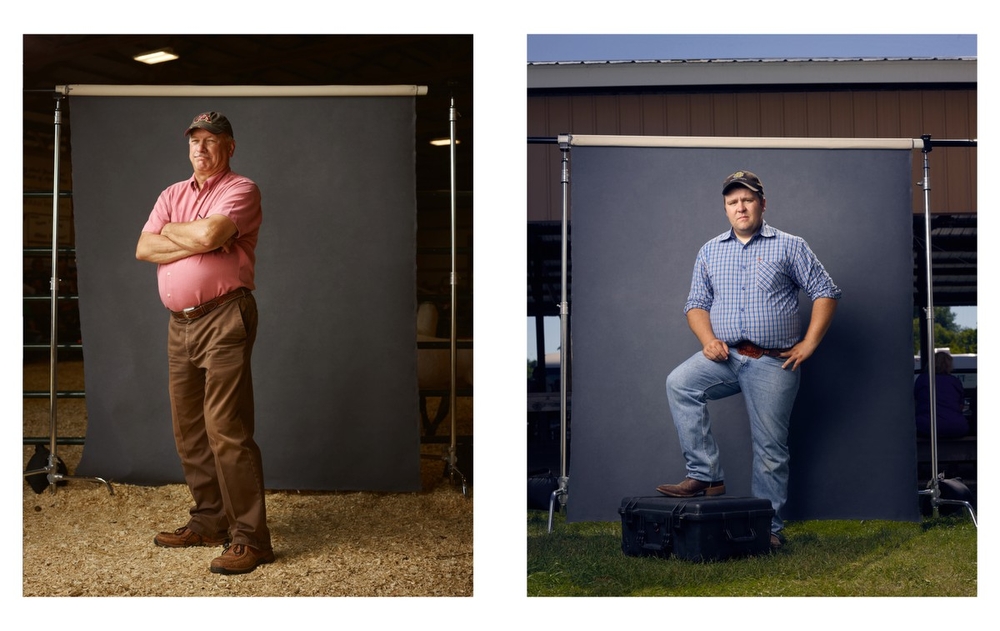
Ken the Judge, West Otter Tail County Fair (left) and Josh the Judge, Isanti County Fair (right). @R. J. Kern
R. J. Kern (b. 1978) is an American artist whose work explores ideas of home, ancestry, and the sense of place. He uses the photographic medium in multiple formats, utilizing both natural and artificial light to document the interaction of people, animals, and cultural landscape.
His work has been exhibited in a number of notable exhibitions, including at the Museum of Modern Art (Tbilisi, Georgia), National Portrait Gallery (London, UK) and the Yixian International Photography Festival (Anhui, China) among others.Awards and accolades include PDN’s 30 2018, CENTER 2017 Choice Award Winner, Curator’s Choice (First Place), the 2017 TAYLOR WESSING Photographic Portrait Prize (Finalist), and is the recipient of two Artist Initiative Grants from the Minnesota State Arts Board (2016, 2018).
Kern’s work has been presented in a number of publications, including a feature in National Geographic (November 2017), with his series The Unchosen Ones and Out To Pasture. In 2018, Kern published his first monograph with Kehrer Verlag titled, The Sheep and the Goats. Public collections holding his work include Center for Creative Photography, The Griffin Museum of Photography, the Plains Art Museum, and the Museum of Fine Arts, Houston. He is represented by the Klompching Gallery in New York. He lives and works in Minneapolis, Minnesota.
Tell us about your growing up and what brought you to photography?
My parents encouraged my creative pursuits early on which helped build my confidence in creative expression. I became hooked on photography in my high school’s darkroom in 1994, and I knew I wanted to study art in college. Many of my undergraduate photography projects were independent studies also involving printmaking and painting. I enjoyed the various media, but photography seemed like the best vehicle to express my ideas. I double-majored in geography which helped open doors for me at National Geographic. I worked there from 2000 – 2005 and was encouraged to find my distinct creative voice. That takes time, in my case about 10 years, but the journey has been rewarding on many levels.
You are a family man, how do you make it all work–generating an income from photography, creating your own stellar personal projects, navigating the fine art waters?
Personal discovery is central to my work and my motivation to work. While I suspect there is no perfect balance, commercial work, grants, and print sales helps to offset the costs and time needed to develop personal projects. I earmark time for personal work, planning and looking forward to those opportunities each year. They fill the well. My desire to make art is in the journey, not just the destination.
I care about my work and want to continue creating for decades to come. I structure my days mindful of both the importance of small details and the big picture. A quote from Edward De Bono has offered me perspective: “Creativity is a great motivator because it makes people interested in what they are doing. Creativity gives hope that there can be a worthwhile idea. Creativity gives the possibility of some sort of achievement to everyone. Creativity makes life more fun and more interesting.”
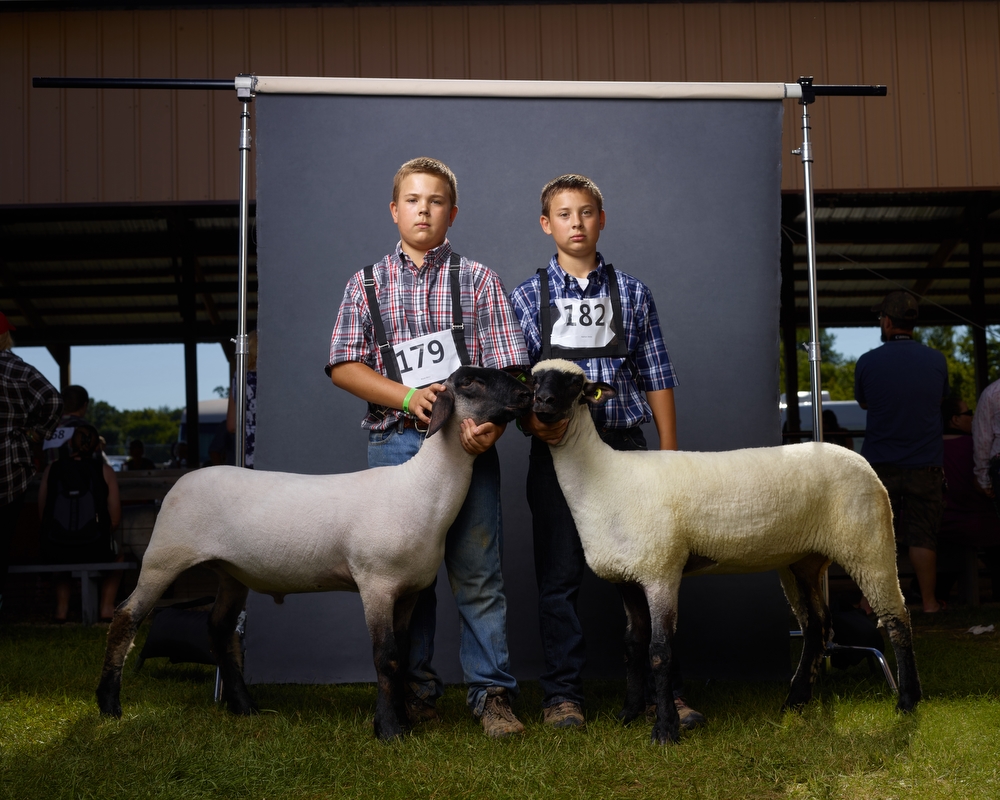
Bryce with Freaky Freddy and Nathan with Skittles, Isanti County Fair. From the series The Unchosen Ones. © R. J. Kern
You’ve had a lot of successes in the last two years–what’s the biggest lesson you’ve learned and the best advice you can pass on?
Understanding the actual life cycle of a creative project is important. It takes years for me complete a series, creating the work, but also everything from writing grants to final editing and sequencing. Creating the work is where many artists stop. The key is understanding the effort required to market the work to target audiences after you have made it. That requires a different set of skills. Seeking and working with good mentors has been important, and also attending portfolio reviews, applying to shows, and meeting with publishers. Negotiating contracts can be intimidating, but having good people to work with is invaluable. Expert help with taxes, grant writing, contract negotiation, printing and framing work, selling prints through galleries all have contributed. Learning to delegate has also been key for growth.
Following your The Sheep and The Goats projects and book, what led you to continue making work about animals?
I wanted to extend my work with sheep and goats without flying overseas. The Unchosen Ones is a stepping stone, extending my work with sheep and goats. However, goats and sheep aren’t very easy to find in Minnesota, like they are in Ireland and Iceland. The county fair system is an ideal gateway for connecting to those who raise the animals. All the Minnesota animals in the The Sheep and The Goats were part of the “The Unchosen Ones” project.
The Unchosen Ones is so poignant, can you talk about making the work–what was your process and what did you learn from your subjects?
I am fortunate in that the work was supported by an Artist Initiative Grant from the Minnesota State Arts Board in 2016. I find that the process of writing grants helps to clarify my thoughts and ideas, sometimes the hardest part of the job but an essential part of the art making. I needed to master some technical expertise specific to lighting, so I attended a studio lighting class by Felix Kunze who helped me understand nuances of light and controlling shadow detail. I had a custom Oliphant backdrop created to my specs… and finally came the fun part. I visited 10 county fairs in Minnesota in the summer of 2016, spending time watching and learning from the 4-H judges in the sheep and goat classes.
Clearly, the kids work hard, and I wished to honor their effort. Life skills such as determination, confidence, and attitude are built on their experiences. I often met the competitors just after the judging line, and I would prompt them: “Show me what next year’s Grand Champion will look like.” Right away, many would stand taller, focus their eyes, and demonstrate confidence to their best of their ability. Their confidence and hope inspired me.
Congrats on your new book! First, why publish your own book?
“Home” is a theme in my work. Having this project conceived and executed in Minnesota appealed to me. Furthermore, I had specific budget and time requirements which made self-publishing a perfect fit for this project. Printing in Minnesota meant the book would be done in time for a series of exhibitions opening first at Klompching Gallery on May 10, then Burnet Fine Art & Advisory July 14, and then the Griffin Museum of Photography in October 2018. In addition, the book will be available for a series of community exhibitions traveling to county fairs, bringing it back to where it was created, connecting with the kids and their communities again. Full Circle.
I find inspiration in artist books and figured this would be the terrific opportunity to showcase the work in a format that would resonate with rural (and urban) homesteaders and the gallery world alike. While I had a wonderful experience with Keher Verlag for my monograph, The Sheep and the Goats, I wanted to do something special with my project, The Unchosen Ones.
Can you describe the book(s)?
The Unchosen Ones is set on the sidelines of county fair animal contests in Minnesota. I was more interested in photographing the “also rans” than the Grand Champions. We all know what it is like to be “unchosen” — maybe for a job, for love, or a juried group exhibition. Empathy is a key component.
This book is unbound and features all 65 portraits created for the project. In keeping with the spirit of the project, I didn’t establish a hierarchy, choosing which images would come before others or even which would or would not appear. I felt obliged to return the trust granted to me; they would all be published.
Purple is the color of Grand Champion ribbons at county fair livestock shows. I created a custom purple ribbon with the title of the book, “The Unchosen Ones” for the front and back cover.
Why create an unbound book?
An unbound book may be resequenced. It puts the viewer in the role of “chooser” drawing attention to the process of judging. I specifically didn’t use page numbers for this reason, and sequenced the book from the press in alphabetical order. Not eliminating any of the competitors remains an important aspect of the project. I wonder how the parent of one of the subjects might sequence the book.
And finally describe your perfect day….
Sleeping past 7am would be an amazing start the day! My wife and I have little ones that wake us earlier than that. I like spending relaxed time around the house in the morning, enjoying the luxury of sharing breakfast and listening to music with the kids. They love their daycare (as do we), and everyone is happy they spend engaged time there. I stay fit with Crossfit-style workouts and martial arts training, then hit up the emails and admin parts of my business right after working out. That is when I am focused and have the best clarity in thought. In a perfect day, I’d share a lunch date with my wife, then move on to creative activities for as long as I can into the early evening. I love getting together with artists to talk shop, critique, brainstorm in studio or social environments. The more time I can spend outside creating work or in the studio, the better. Dinner is generally at home with the family, often followed by a glass of wine, reading, or watching a film on really special occasions.
Posts on Lenscratch may not be reproduced without the permission of the Lenscratch staff and the photographer.
Recommended
-
Martin Stranka: All My StrangersDecember 14th, 2025
-
The Family Album of Ralph Eugene Meatyard at the High MuseumDecember 10th, 2025
-
Paccarik Orue: El MuquiDecember 9th, 2025
-
Richard Renaldi: Billions ServedDecember 6th, 2025
-
The Art of Documentary Photography: Rania MatarOctober 25th, 2025

